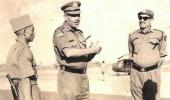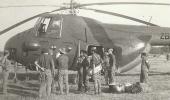'The simultaneous fire from so many guns rained down on the enemy and pulverised them, a sight I can never forget till my last breath.'
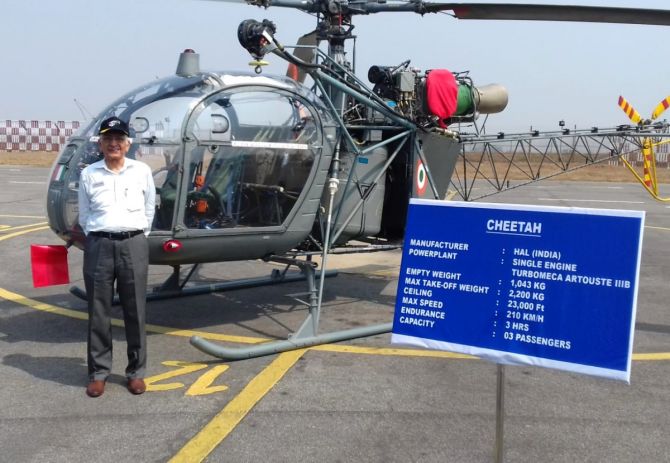
Lieutenant General Narayan Chatterjee was commissioned in the Indian Army's Regiment of Artillery in June 1963.
He commanded the 22 Mountain Regiment in Uri between 1983 and 1985. He also commanded two artillery brigades in Punjab and Arunachal Pradesh.
General Chatterjee completed his basic flying course in Bidar in December 1969 and earned his Air Op Wing from the School of Artillery.
He completed his helicopter conversion course at at the Helicopter Training School, Jodhpur, in 1972 on the termination of the 1971 War.
During the 1971 War he flew Auster Mk IX Air Op aircraft in many challenging operational sorties in the Chhamb and Chicken Neck sectors of Jammu and Kashmir.
The force behind the formation of the Army Aviation Corps, General Chatterjee discusses his life and mission in a conversation with Rediff.com Senior Contributor Air Commodore Nitin Sathe.
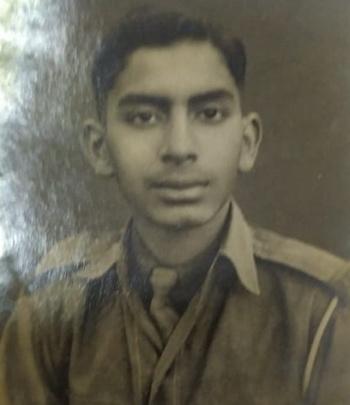
IMAGE: Cadet Narayan Chatterjee at the Rashtriya Indian Military College in Dehradun, 1955-1959.
Photograph: Kind courtesy Lieutenant General Narayan Chatterjee
An alumnus of the Rashtriya Indian Military College, Dehradun, and the National Defence Academy, Khadakvasla, Second Lieutenant Chatterjee joined the Indian Army's elite 17 Para Field Regiment in Agra after graduating from the Indian Military Academy, Dehradun, in June 1963.
"I was fortunate to get into this elite regiment. But to get accepted into the rank and file required very, very, hard work. One had to prove himself mentally and physically robust to be the best of the best," the general recalls, adding that he was soon a 'Para Gunner' -- a special breed of artillerymen who wore the prized maroon beret and could be dropped with their guns behind enemy lines to wreak havoc in the adversary's camp.
"It was early 1965, and war clouds loomed large. We were moved from Agra to the Rann of Kutch, which was the second flashpoint other than Kashmir. Border skirmishes and firing on each other's patrols became a norm; and as young officers, we got a taste of war, early in our career," he remembers.
"Mobilisation of such a large force needs planning, coordination and quick decision-making skills, something that I learnt on the job in this move. Our seniors in the unit were legends and one could not dream of letting them down, especially in operations."
The unit was moved during the 17-day 1965 War to the Lahore sector when the operations intensified and here too his unit played an active role in throwing back the intruding Pakistan army.
"I still remember the areas -- 'Biarbet', 'Dharamshala', 'Sand-dunes' and 'Point-84' == which were prevented from falling into enemy hands, thanks to some good artillery bombardment followed by infantry operations," remembers the veteran.
Right from the day he became a para officer, he had been exposed to aircraft, airmen, airfields and the medium of air warfare.
In his heart of hearts, he always dreamt of being in the cockpit but being in the most elite, only para-artillery unit of the Indian Army, to voice this 'want' was difficult.
"My CO (commanding officer), Colonel R C Butalia during the war was also an AOP (Air Observation Pilot) and had motivated me to opt for flying. Whenever I saw AOP aircraft flying around in the forward area and directing the firing of our artillery guns, I wished I was up there doing the same!"
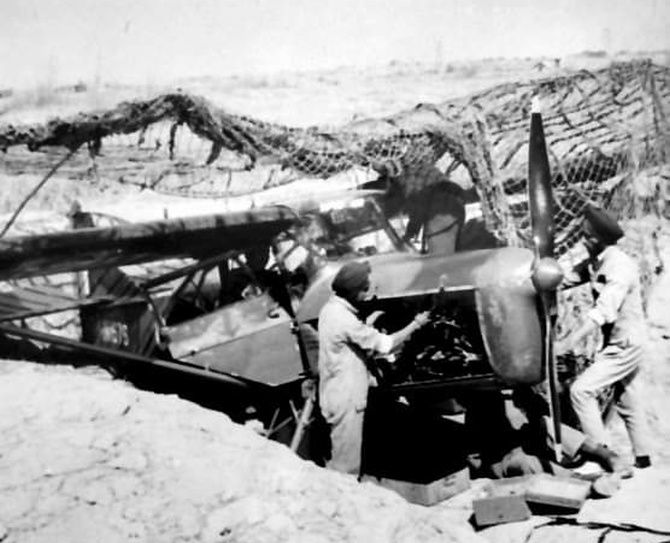
After the war, the unit moved back from the Icchogil canal to Agra and then onward to the 'Sugar' sector, this time confronting the Chinese.
"It was good to be in the cool and serene hills of Himachal; and, trips to Shimla were most invigorating for us youngsters in those days."
"My CO in the Sugar Sector was Colonel K K Hazari (later, lieutenant general and vice chief of the army staff) who asked me one day if I wanted to opt for flying as an AOP pilot.
"My joy knew no bounds, I smiled ear to ear and said 'YES SIR' to him immediately. I had just finished 6 years in uniform and my life was going to take a new turn."
"Selected and found fit for flying, I went flying the HT-2 at Bidar." After Bidar, he went to Nashik to learn to fly the Krushak aircraft at the 665 AOP Squadron.
"On my uniform, I proudly sported the para and flying wings, something that very few in the armed forces wore."
At the end of 1970, he was posted to Jammu to the 661 AOP Squadron to fly the Auster Mk-IX which had replaced the ageing Mk-V.
"It was a versatile machine with a most reliable 'Bombardier Cirrus' engine. I was soon doing 'shoots' with my fellow artillerymen at the ranges, enjoying every bit of time spent in the air."
"We had the best of IAF guys who maintained our machines and our bonhomie with the IAF mates at the Jammu airbase knew no bounds."
He was soon to see another change in his aviation career.
The army was to acquire helicopters, and the first set of pilots were sent to the Helicopter Training School at Jodhpur to fly the Bell-47.
"To fly the helicopter, one had to get rid of many of the habits of fixed-wing flying and I was soon comfortable in the noisy and vibrating environment of the helicopter," he recalls.
The conversion had to stop halfway though. War was imminent, all courses were cancelled, and officers sent back to their units to augment the manpower to fight.
"I was soon back at Jammu to fly the Auster Mk IX, and training for war began in earnest."
Only two out of five aircraft were available for flying, the other three were unserviceable for want of spares.
Two Pushpak aircraft were requisitioned from civil flying clubs for the war.
The 15 Corps based at Udhampur was commanded by Lieutenant General Sartaj Singh, the 10 Division based in Chhamb by Major General Jaswant Singh and the 26 Division at Jammu by Major General Zorawar Bakshi, all military legends and tough taskmasters.
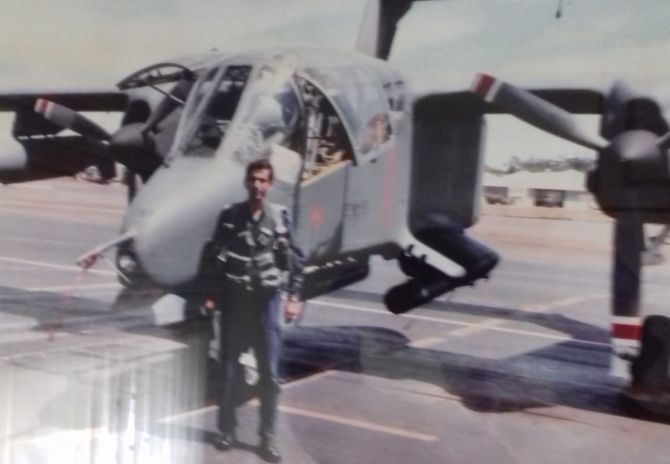
After war was declared on December 3, 1971, he flew a number of missions, directing artillery fire onto the enemy.
One evening, on December 9, he was summoned to meet General Zorawar Bakshi. He was told that the GOC wanted to personally brief him about a mission.
"I understood that it was a vital and top-secret mission since the GOC himself was going to brief me. I reached the 26 Division HQ only to realise that the HQ had been shifted into operational shelters and moved away from its permanent location," he remembers.
"At the camping ground, I was soon ushered into the GOC's caravan along with Lieutenant Colonel (later lieutenant general) Narhari, the CO of the Engineer Regiment."
Seeing General Bakshi up close for the first time was intimidating for the young officer, but the general soon had both officers at ease.
"'This is a top-secret mission being monitored at the highest level. My young son, I want you take Narhari up with you tomorrow morning and fly towards the Marala Head Works. Use the camera of your aircraft and get me some good pictures as we want to assess the structure of the dam, the thickness of the concrete and all relevant details that you can get us. Narhari, you will carry a 'Rolliflex' camera and do some 'shooting' from the cockpit'."
"'I want you to get airborne as early as you can and I do not want you to discuss the mission with anyone...' the general added."
"'And yes, do not fly too close to the dam or cross over, we have intelligence inputs that the Pakistanis have fortified the areas around the dam. You might face some flak from them, but I want you to be safe and get me the information which is most vital'."
Both officers were offered coffee by the general and as they departed, he slapped them on their backs and said 'God Bless You Both!'
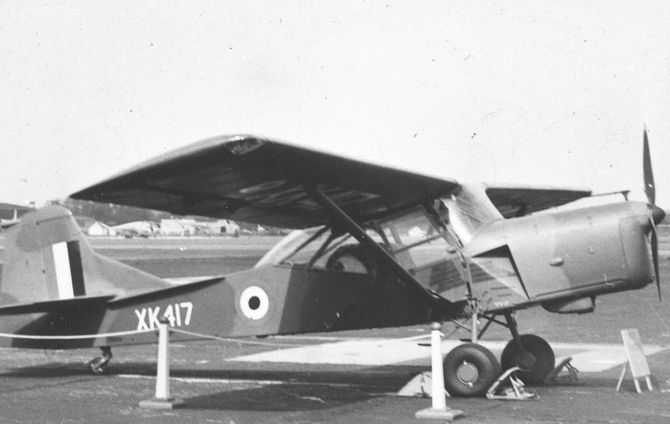
An excited Captain Chatterjee was soon back at the airfield, getting his airmen to prepare the aircraft, informing the operations and air traffic control of his pre-dawn take-off. Of course, not disclosing where he was going.
"This was going to be a different operational mission, and I did not want any last-minute delays or untoward incident. We had excellent airmen, I remember their names today too... Corporal Rajkumar and Sergeant Kumar were there at the aircraft doing their checks on the machine in the darkness when I reached the tarmac in the morning."
"Believe me Nitin, 30 to 40 years working alongside the IAF, flying all over the country, these airmen never let us down. The unity in the uniforms was unparalleled."
It was a long sortie flown at low levels and they got what was required.
They also could make note of the Pakistani deployment near the dam for information of the Indian forces.
"As we headed back, we were spotted by a MiG-19 and it tried to follow us. I ducked down to tree-top height and zigged zagged my way back to the airfiled; and I think the MiG lost me in the backdrop of the foliage, thankfully!"
The mission was a success. As they got down from the aircraft, the ATC officer and airmen and jawans came running on the tarmac to receive them with handshakes.
"The hugs and slaps on our back we got that day can never be erased from memory," the ace recalls.
"The Marala Head Works was an important and strategic target for us. If we attacked the dam and caused sufficient damage, the gushing waters would cause flooding in the plains of Pakistan-Punjab wreaking havoc and also not allowing movement of their armour."
The dam, however, was not targeted as the war ended in 13 days. Till today, it continues to be a strategic target!
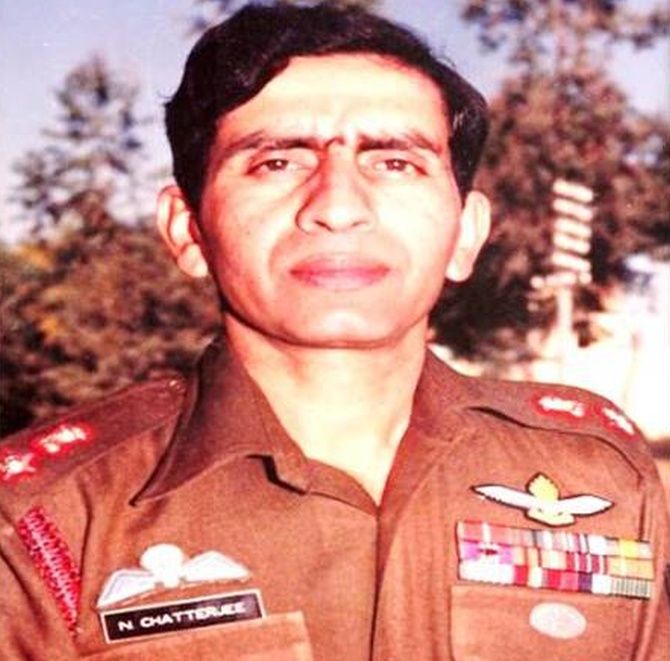
General Chatterjee has an amazing memory and can recount aircraft registration numbers, names of his ground crew as well as the names of places as he narrates stories from the 1971 War.
One memory he shared was his contribution to the counter-attack on advancing Pakistani forces in the Battle of Chhamb on the Munnawar Tawi river.
The Pakistan army's GHQ's orders to General Iftikhar, GOC, 23 Division, were to clear Indian-held territory up to the Munnawar Tawi rival.
General Iftikhar, in his wisdom, decided to attack from the hilly north side where the movement of his armour was difficult.
According to experts, his decision to do so were primarily to achieve surprise and also due to the fact that the Indians held the territory to the south much more strongly.
General Iftikhar's plan was to reach the Mandiala bridge across the Munnawar Tawi so as to force the Indians to withdraw from areas west of the river.
Although the Pakistan army achieved a fair degree of success in this operation, their plan was marred by the fact that armour movement was restricted. Also, logistic support was poor in narrow corridors.
This led to a 'pause' in the battle -- a situation that allowed the Indians to reorganise themselves for a counter-attack to throw the Pakistani forces out of the area.
"The counter-attack on the Pakistani-held positions on the banks of the Tawi was to be preceded by heavy artillery shelling to soften them up. That is where I came in. I think it was 10th December.
"I got a call to reach Rakhmuti around 2 pm just after I had finished my lunch. There was a requirement to take a 'shoot' in the evening and I was quite looking forward to it!"
'Heavy concentration of armour seen on the western bank of the Tawi in General area Chhamb. Armour is likely to cross the Tawi with field artillery support at night. All fire units (Guns) of 10 and 26 Artillery Brigades are available. Likely time for counterattack 1700, to end by last light. 26 Brigade Fire Direction Centre (FDC) will coordinate and control fire for both brigades. Radiofrequency ###.#. Contact on getting airborne for further information. Happy shooting!'
Major Anand, (he still remembers!) was the Brigade Major of 26 Brigade who had briefed him that afternoon.
The GOC 15 Corps, as well as 10 Division Commander, were in the general area controlling the counter-attack.
"It was important that the Pakistanis be beaten back now, otherwise, we would lose Chammb sector, maybe forever, or the Pakistanis would use these gains as bargaining power at the end of the hostilities."
"The sun was in the west, directly into my eyes and I could not see much except for the dust kicked up by the tanks. I knew where to direct the fire and went up on radio."
'6 for all stations, over! 6 for all stations over... confirm ready...'
No reply. It was exasperating.
"I wondered if I had selected the wrong frequency or there was some botch up in the communication with the formations. An idea struck me as I was re-tuning my radio set to try the communication again. I had a small bag that was used to drop important mail over posts. I scribbled down the frequency on a piece of paper, put it in the bag and flew low to drop it at the gun area of the 10 artillery brigade!"
After a few seconds, the FDC (Fire Direction Centre) came up loud and clear!
'Hello 6! Guns ready to fire! Over!'
Captain Chatterjee heaved a sigh of relief and his adrenalin kicked in.
He rechecked with the FDC if all guns were available since he wanted the full volume of fire on to the target.
'All available for 6! Over and out!' came the reply, thereafter directing the fire of 104 guns of the artillery onto the target.
"The simultaneous fire from so many guns rained down on the enemy and pulverised them, a sight I can never forget till my last breath."
'Hello 6 from Big Tiger,' crackled the radio set. 'Targets neutralised, excellent shooting! My compliments! Return to base safely, Over and out!'
The Pakistani assault on Chhamb had been averted, but the forces on the ground needed to get hold of the western bank of the Tawi as part of the counter-attack plan.
Through the night of 10th December, after some fierce fighting, the western bank of the river was again occupied by Indian forces.
An elated Captain Chatterjee flew back to the airfield in the dying moments of the day.
The light was fading and he was low on fuel again.
"As I was flying from the border area near Akhnoor, I was spotted again by a MiG-19, but this time he too was in a hurry to get back to his base and left me alone. I flew to Jammu at tree top level."
Another surprise awaited him as he came in for a landing at Jammu.
The runway was blocked from both ends by concrete-filled barrels and landing wasn't possible.
"I was the only aircraft flying in their area and once I announced my predicament over the radio, the ATC was quick to react. Jawans, airmen and my own troops got together and moved the obstructions within the time I got to do one orbit over the airfield; yet again displaying the true spirit of jointmanship."
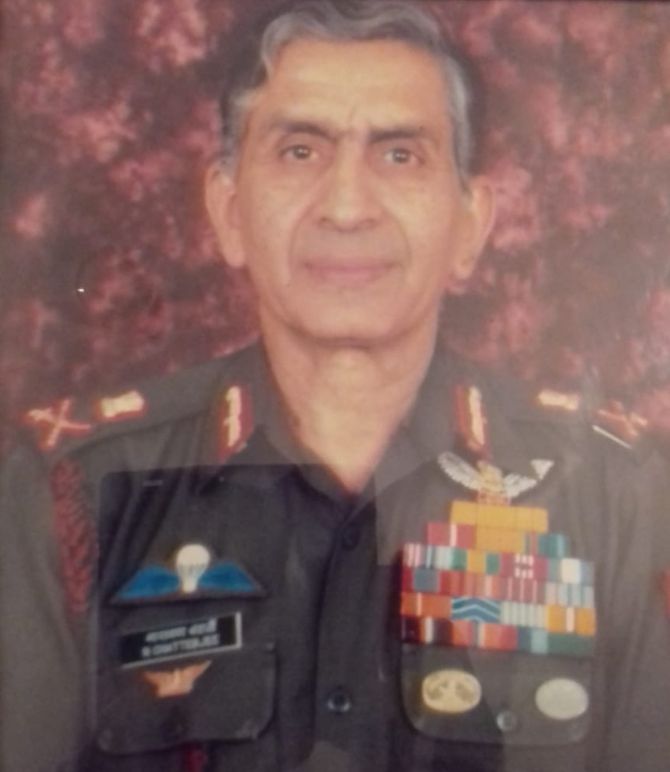
As he completed his mission, intelligence reports had come in that the Pakistanis were going to try and para-drop their troops to take over the airfield at Jammu.
To thwart their intent, the station commander had ordered that the runway be made un-operational by placing the obstructions.
"In fading light, I landed with the red low-level warning light for fuel yet again!"
"Just think of it, my mission would have failed if I hadn't hit upon the idea of dropping the bag with the piece of paper over the FDC. Who knows, the war would have taken a different turn, maybe!"
Air Commodore Nitin Sathe retired from the Indian Air Force in February 2020 after a distinguished 35 year career.
The author of three books, you can read Air Commodore Sathe's earlier articles here.

Feature Presentation: Rajesh Alva/Rediff.com


